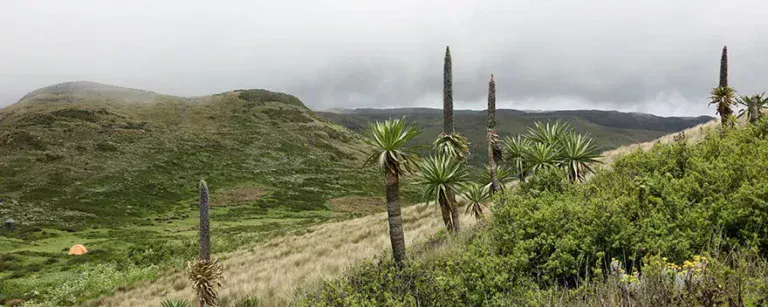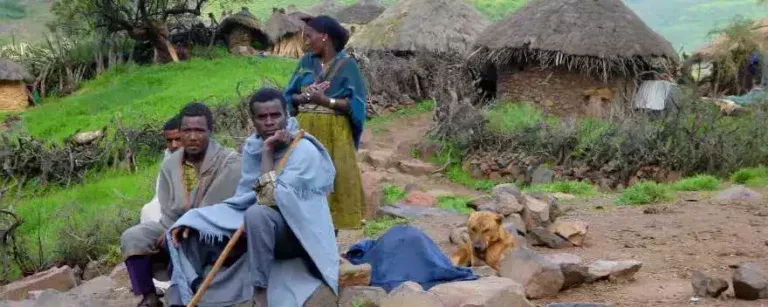Stepping into the world of the Hamar Tribe is akin to opening a vibrant and intricate cultural treasure box. This Ethiopian ethnical group is one of Africa’s most fascinating tribes, known for their distinctive rituals, strong social structure, and an economic system deeply rooted in their environment. As we delve into their world, we’ll explore how these factors intertwine to create a captivating culture that has intrigued anthropologists and travelers alike for decades.
Geographical Context: The Hamar’s Ancestral Homeland
The Hamar tribe resides in the Southwestern part of Ethiopia, specifically in the Omo River valley. This region, known for its rich biodiversity and diverse ethno-linguistic groups, forms the backdrop of the Hamar tribe’s lifestyle and traditions. The tribe’s intimate relationship with their land, its flora and fauna, deeply influences their culture and lifestyle.
Population and Demographics
The Hamar tribe consists of approximately 46,500 members. They predominantly reside in the Hamar woreda, an administrative division in the Southern Nations, Nationalities, and Peoples’ Region of Ethiopia. However, it is essential to consider the demographic dynamics as this population estimate might have changed over the years.
Hamar Tribe Language: Banna – Hamar
The Hamar tribe speaks a language known as Banna – Hamar, part of the Omotic family of languages native to Southwestern Ethiopia. Their language, rich in metaphors and proverbs, is a crucial cultural carrier, reflecting their worldview and cultural practices.
Rituals and Ceremonies
Perhaps what makes the Ethiopian Ethnical Group Hamar Tribe most captivating is their rituals and ceremonies, which are intricate expressions of their beliefs, values, and societal norms.
Bull Jumping Ceremony: A Rite of Passage
The bull-jumping ceremony, known as “Ukuli Bula,” is one of the most significant rites of passage for Hamar men. In this daring spectacle, a young man must successfully run across the backs of a row of bulls to prove his readiness for adulthood and marriage. Failure isn’t an option here; it’s done or do again.



Evangadi: The Hamar Night Dance
The Evangadi is another key cultural practice, a night dance where both men and women participate. It’s a celebration of life, community, and unity, often accompanied by rhythmic singing and the jingle of metallic ornaments worn by women.
The Significance of Scarification
In Hamar culture, scarification is not merely an aesthetic choice but a significant rite, particularly for women. It’s seen as a symbol of beauty and maturity. The process, while painful, is willingly endured by women, signifying their strength and resilience.
Role of Women in Hamar Tribe
Women in the Hamar tribe play multifaceted roles, from childbearing and rearing to managing household chores and participating in rituals. Despite the hardships they face, Hamar women are known for their strength, resilience, and unwavering spirit.



The Place of Men in Hamar Society
Men in Hamar society are primarily responsible for cattle herding, defense, and decision-making. Their status in society is often determined by their ability to own cattle and their performance in rituals like bull-jumping.
Children and Youth: Growing up in the Hamar Tribe
Growing up in the Hamar tribe means being immersed in their rich traditions from a young age. Children’s roles and responsibilities evolve with age, from herding smaller livestock to participating in important tribal rituals.
Hamar Tribe’s Economic System
The Hamar tribe’s economy is a blend of subsistence farming, cattle rearing, and trade.
Subsistence Farming: Life of a Hamar Farmer
Farming forms a substantial part of the Hamar tribe’s economy. They cultivate a variety of crops, including sorghum, vegetables, and coffee, primarily for their own consumption. The rhythm of farming tasks follows the seasons, shaping much of their yearly cycle.
The Hamar Cattle Culture
Cattle are central to the Hamar economy and social status. They are not just economic assets but also hold significant cultural and symbolic value. Cattle are involved in rituals, marriages, and dispute settlements, reflecting their profound role in Hamar life.



Trade and Barter: Hamar Marketplaces
Trade is an essential aspect of Hamar’s economy, with goods often exchanged in local marketplaces. These markets are also social hubs, places for gossip, negotiations, and camaraderie. The largest and most interesting are the markets in Turmi, Dimeka, Alduba.
Hamar Tribe’s Artistic Expressions
Art in the Hamar tribe manifests in various forms – from beadwork to body painting and unique hairstyles.
The Art of Beadwork in Hamar Tribe
Beadwork is a significant part of Hamar aesthetics, particularly for women. Beaded necklaces, bracelets, and headdresses form a key aspect of their traditional attire and often denote a person’s status within the tribe.
Hamar Hairstyles: A Statement of Identity
Hamar hairstyles are more than a fashion statement. They often symbolize a person’s age, marital status, and social standing. They incorporate elements like ochre, butter, and animal fat, creating a unique, striking look.
Body Painting: A Colorful Tradition
Body painting is a vibrant practice within the Hamar tribe. Using natural pigments derived from the earth, Hamar men and women adorn their bodies with intricate designs, transforming their skin into living canvases. These colorful patterns not only enhance physical beauty but also hold significant cultural and symbolic meanings.
External Relations: The Hamar Tribe in a Globalized World
As the world becomes increasingly interconnected, the Hamar tribe’s interactions with the external world have evolved.
Hamar Tribe and Tourism
The allure of the Hamar tribe’s rich culture and unique lifestyle has attracted tourists from around the globe. While tourism brings economic opportunities, it also poses challenges to the preservation of their traditional ways of life.
Hamar Tribe and Modernization: A Delicate Balance
Modernization presents a complex paradox for the Hamar tribe. While certain aspects, like healthcare and education, have positive implications, there are concerns about erosion of cultural identity and autonomy. Striking a balance between preserving traditions and embracing beneficial aspects of modernity is a delicate task the Hamar tribe continues to navigate.
The Hamar Tribe and the Role of NGOs
Non-Governmental Organizations (NGOs) play an essential role in supporting the Hamar tribe’s development needs, from healthcare initiatives to educational programs. Their role, however, needs to be balanced with respect for the tribe’s cultural sovereignty and self-determination.
The Future of the Hamar Tribe
The future of the Ethiopian Ethnical Group Hamar Tribe is an intricate tapestry woven with threads of tradition and change. As they continue to navigate the complexities of modernization, their resilience, cultural richness, and strong communal bonds offer hope for a future where they can continue to thrive while maintaining their unique cultural identity.
Frequently Asked Questions
What is the Hamar tribe known for?
The Hamar tribe is known for its unique rituals, like the bull jumping ceremony and the night dance, Evangadi. They are also recognized for their distinctive hairstyles, body paintings, and beadwork.
Where does the Hamar tribe live?
The Hamar tribe primarily resides in the Southwestern part of Ethiopia, specifically in the Omo River valley, an area known for its rich biodiversity and diverse ethno-linguistic groups.
What language does the Hamar tribe speak?
The Hamar tribe speaks a language known as Banna – Hamar, which belongs to the Omotic family of languages native to Southwestern Ethiopia.
How does the Hamar tribe’s economy work?
The Hamar tribe’s economy is a blend of subsistence farming, cattle rearing, and trade. Farming and cattle herding form the backbone of their economy, while local marketplaces serve as hubs for trade and social interaction.
What challenges does the Hamar tribe face?
The Hamar tribe faces several challenges, including preserving their cultural traditions amidst the pressures of modernization and globalization, managing the impact of tourism, and accessing essential services like healthcare and education.
How is the Hamar tribe’s social structure organized?
The Hamar tribe’s social structure is complex, with roles and statuses often determined by age, gender, marital status, and wealth. Women play crucial roles in household management and rituals, while men are primarily responsible for cattle herding, defense, and decision-making.
Conclusion
Unraveling the intricate cultural tapestry of the Ethiopian Ethnical Group Hamar Tribe offers valuable insights into a unique way of life deeply rooted in tradition, social relationships, and the natural environment. As they navigate the currents of change, their resilience and cultural richness stand as a testament to their unique heritage. While challenges lie ahead, the Hamar tribe’s journey towards the future promises to be as fascinating as their past.







